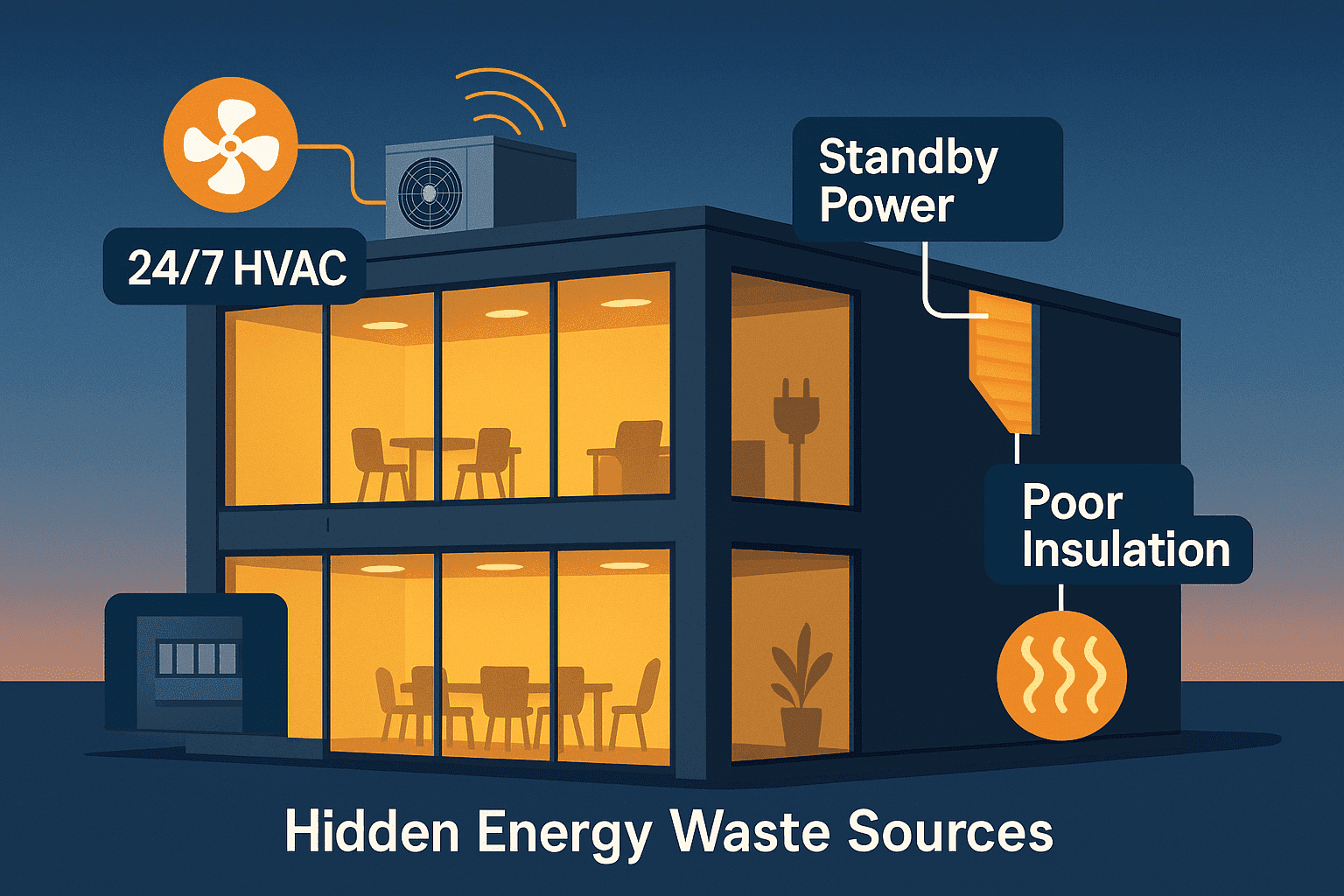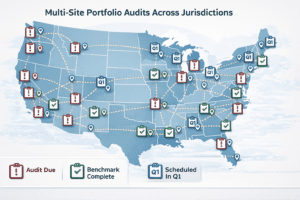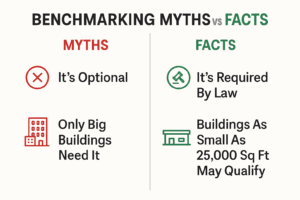How Energy Benchmarking Impacts Your Net Operating Income (NOI)
Small energy inefficiencies drain your building’s profits. Energy benchmarking can turn that around.
In commercial real estate the goal is to improve your Net Operating Income (NOI). That’s why smart building owners and managers are turning to energy benchmarking, not just for compliance, but to reduce building expenses and boost profitability.
Here’s how benchmarking helps you improve your NOI.
Benchmarking Reveals Hidden Energy Waste
Buildings waste more energy than owners realize, until they start tracking it.

Energy benchmarking is the process of measuring and comparing your building’s energy use against similar properties. By analyzing your usage patterns and utility data, you can spot inefficiencies that may not be visible day-to-day.
When one building owner benchmarked their portfolio, they found a rooftop HVAC unit that ran 24/7, even when the building was empty. Fixing that issue saved them over $8,000 annually.
Energy data exposes silent losses, like:
- Outdated HVAC systems running during off hours
- Poor insulation causing overuse of heating or cooling
- Lights left on in unoccupied areas
- Standby equipment draining power after hours
Once you know where the waste is happening, you can act and improve your NOI.
Lower Operating Costs = Higher NOI
Energy costs are a major part of NOI expenses accounting for 30% (or more) of a building’s controllable costs.

Example:
Let’s say your building earns $1,000,000 annually in gross rental income. If your operating costs are $600,000, your NOI is $400,000.
But if you reduce energy costs by just 15%, you might save $45,000.
Now your operating costs drop to $555,000, and your NOI increases to $445,000. That’s an 11.25% NOI boost from one area of savings.
Formula:
NOI = Gross Income – Operating Expenses
And since building value is often based on a multiple of NOI, these savings also increase your asset’s market value.
Benchmarking Improves Your ENERGY STAR Score
Your building’s ENERGY STAR score reflects how efficiently it uses energy.

ENERGY STAR scores range from 1-100. A higher score means better performance compared to similar buildings nationwide. Most government and investor-grade benchmarking programs use this score to assess performance and risk.
Improving your score by just a few points can:
- Qualify you for rebates and green certifications
- Lower your insurance or lending risk profile
- Increase tenant retention and attraction
- Support ESG and sustainability reporting
One client improved their ENERGY STAR score from 68 to 80 through a single benchmarking-driven upgrade: optimizing building controls.
The result? Lower operating costs and improved asset desirability.
Benchmarking Helps You Prioritize Capital Improvements
When you benchmark, you get a performance baseline for your building. This helps you model different improvement scenarios and estimate ROI before spending a dime.
Want to know if LED lighting, new insulation, or building automation will improve NOI the most?
Benchmarking gives you a data-backed answer, helping you plan improvements that deliver the biggest impact on both cost savings and property value.
Here are two examples of how benchmarking supports investment planning:
Example 1:
A multifamily owner used benchmarking to prioritize boiler replacement over window upgrades, saving $22,000/year with a 2.4 year payback.
Example 2:
An office complex discovered their elevator system used 3x more power than peers.
Benchmarking Can Uncover Rebates and Incentives
Many utility companies and local governments offer rebates for benchmarking or energy upgrades.

These incentives can cover 30% to 100% of project costs, helping you improve performance with little or no capital outlay. Benchmarking makes it easier to access these programs, prove eligibility, and calculate savings.
Common incentive opportunities include:
- Benchmarking cost reimbursement
- Low- or no-interest energy upgrade financing
- Performance-based rebates tied to EUI or ENERGY STAR improvements
- Local law exemptions for early adopters
Incentives make energy improvements not just cost-effective, but profitable.
Benchmarking Prepares You For Local Laws
More cities and states are mandating benchmarking, and performance is becoming the next frontier.
In places like New York City, Boston, and San Jose, compliance focuses on proving year-over-year energy improvement. These Building Performance Standards (BPS) use benchmarking as a foundation to enforce emissions targets and energy use intensity (EUI) reductions.
If you’re already benchmarking, you’re ahead of the curve. You’ll have the data needed to:
- Avoid non-compliance fines
- Model future performance gaps
- Plan upgrades in advance
- Maintain higher asset value
Buildings that wait risk rushed work, missed incentives, or unplanned penalties.
Benchmarking Is A Strategic NOI Lever
Too often, building owners overlook energy data as a business tool. But benchmarking changes that.

Benchmarking isn’t just a compliance task. It’s a strategic asset. Used correctly, it improves decision-making, cuts costs, and increases income.
Let’s recap what benchmarking does for your bottom line:
✅ Identifies energy waste and unnecessary expenses
✅ Lowers operating costs that directly boost NOI
✅ Improves ENERGY STAR scores for better financing and tenant appeal
✅ Helps prioritize upgrades with the highest ROI
✅ Unlocks access to rebates and incentives
✅ Ensures compliance with new energy laws
When implemented strategically, benchmarking becomes a key part of your NOI growth.
FAQs
Q: What is energy benchmarking?
A: Energy benchmarking is the process of tracking your building’s energy use and comparing it to similar buildings to find opportunities for efficiency and cost savings.
Q: How does benchmarking affect NOI?
A: By identifying and reducing energy waste, benchmarking lowers operating expenses, which increases Net Operating Income (NOI).
Q: Can benchmarking increase my property value?
A: Yes. Since commercial real estate is often valued as a multiple of NOI, increasing NOI through energy savings can increase your building’s market value.
Q: What’s the cost to benchmark my building?
A: Benchmarking costs vary, but many utilities offer free tools or rebates. We also offer a complimentary initial review.
Ready to boost your building’s NOI through smart energy use? Book a Benchmark-to-NOI Strategy Call Today »














